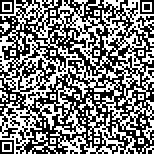| 引用本文: | 刘晓利,李平,王丹,孟超,邢燕,刘芳盈,陈昶,王勤,程忠哲.整合UPLC-QTOF-MS分子网络与网络药理学探究龙葵化学成分及抗肺癌作用机制[J].中国现代应用药学,2023,40(10):1347-1359. |
| LIU Xiaoli,LI Ping,WANG Dan,MENG Chao,XING Yan,LIU Fangying,CHEN Chang,WANG Qin,CHENG Zhongzhe.Integrating UPLC-QTOF-MS Molecular Network and Network Pharmacology to Explore the Chemical Constituents of Solanum Nigrum L. and Its Anti-lung Cancer Mechanism[J].Chin J Mod Appl Pharm(中国现代应用药学),2023,40(10):1347-1359. |
|
| |
|
|
| 本文已被:浏览 1479次 下载 830次 |

码上扫一扫! |
|
|
| 整合UPLC-QTOF-MS分子网络与网络药理学探究龙葵化学成分及抗肺癌作用机制 |
|
刘晓利1,2, 李平1,2, 王丹1,2, 孟超1,2, 邢燕1,2, 刘芳盈1,2, 陈昶3, 王勤1,2, 程忠哲4
|
|
1.淄博市环境有机污染物与人群健康监测分析重点实验室, 山东 淄博 255026;2.淄博市疾病预防控制中心, 山东 淄博 255026;3.重庆医科大学, 重庆 400016;4.潍坊医学院, 山东 潍坊 261021
|
|
| 摘要: |
| 目的 采用超高效液相色谱-四级杆-飞行时间串联质谱(UPLC-QTOF-MS)整合分子网络技术对龙葵全草的化学成分进行快速分析与鉴定,利用网络药理学技术初步探究其治疗肺癌的作用机制。方法 运用UPLC-QTOF-MS,分别在正负离子模式下进行质谱检测与分析,定性龙葵全草中化学成分。同时将二级质谱图转换格式后上传到GNPS网站构建分子网络,对其化学成分进行分析。综合2种方法的定性分析结果结合网络药理学和分子对接,分析龙葵治疗肺癌过程中起主要作用的靶点及通路。结果 质谱分析和GNPS分别鉴定和匹配出41个和54个化合物,其中相交11个化合物,共鉴定出84个化合物。综合上述结果筛选出有效活性成分7个,对应不重复靶点298个,疾病靶点1 294个,相交靶点66个,富集分析得到28条信号通路、20个生物学过程、16个细胞组分、17个分子功能。分子对接结果显示核心靶点与核心成分均有较强的亲和力。结论 运用UPLC-QTOF-MS/MS整合分子网络技术可快速、全面、系统地分析鉴定龙葵全草中的化学成分;网络药理学及分子对接结果为龙葵临床用药和药理研究提供了科学依据。 |
| 关键词: 龙葵 UPLC-QTOF-MS 分子网络 网络药理学 分子对接 肺癌 |
| DOI:10.13748/j.cnki.issn1007-7693.20221497 |
| 分类号:R284.1;R966 |
| 基金项目:淄博市环境有机污染物与人群健康监测分析重点实验室开放资金课题资助 |
|
| Integrating UPLC-QTOF-MS Molecular Network and Network Pharmacology to Explore the Chemical Constituents of Solanum Nigrum L. and Its Anti-lung Cancer Mechanism |
|
LIU Xiaoli1,2, LI Ping1,2, WANG Dan1,2, MENG Chao1,2, XING Yan1,2, LIU Fangying1,2, CHEN Chang3, WANG Qin1,2, CHENG Zhongzhe4
|
|
1.Zibo Key Laboratory of Environmental Organic Pollutants and Population Health Monitoring and Analysis Department, Zibo 255026, China;2.Zibo Center for Disease Control and Prevention Department, Zibo 255026, China;3.Chongqing Medical University, Chongqing 400016, China;4.Weifang Medical University, Weifang 261021, China
|
| Abstract: |
| OBJECTIVE To rapidly analyze and identify the chemical constituents of Solanum nigrum L. by integrating ultrahigh performance liquid chromatography-quadrupole time-of-flight tandem mass spectrometry(UPLC-QTOF-MS) and molecular network technology. To preliminarily explore the mechanism for the treatment of lung cancer by network pharmacology. METHODS UPLC-QTOF-MS was used to detect and analyze the chemical constituents of Solanum nigrum L. in positive and negative ion mode. Meanwhile, the format conversion of spectra was uploaded to GNPS website to build a molecular network and then analyze its chemical composition. In the light of qualitative results, the combination of the network pharmacology and molecular docking was employed to analyze the main targets and pathways of Solanum nigrum L. in the treatment of lung cancer. RESULTS There were 41 and 54 compounds identified and matched by UPLC-QTOF-MS and GNPS, respectively. Among them, 11 compounds intersected. Finally, a total of 84 compounds were identified. As a result, 7 active components were screened out, which were related to 298 non-repeating targets, 1 294 disease targets and 66 intersecting targets. There were 28 signaling pathways, 20 biological processes, 16 cell components and 17 molecular functions obtained by enrichment analysis. The molecular docking results showed that the core targets had strong affinity with the core components. CONCLUSION Integrating UPLC-QTOF-MS/MS and molecular network technology can be used to quickly, comprehensively and systematically analyze the chemical constituents in the whole plant of Solanum nigrum L.. The results of network pharmacology and molecular docking provide the scientific basis for its clinical treatment and pharmacological study. |
| Key words: Solanum nigrum L. UPLC-QTOF-MS molecular networking network pharmacology molecular docking lung cancer |
|
|
|
|
